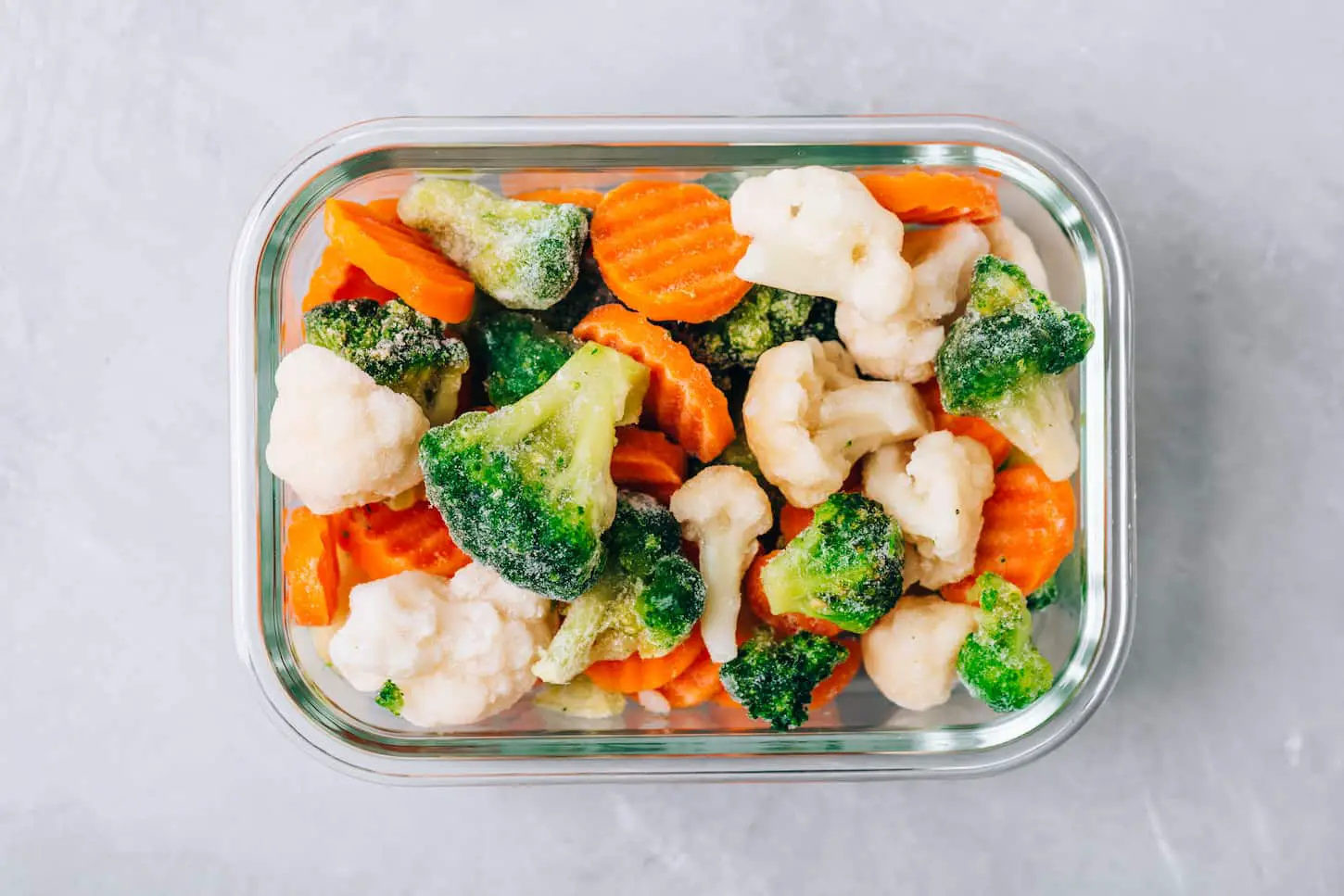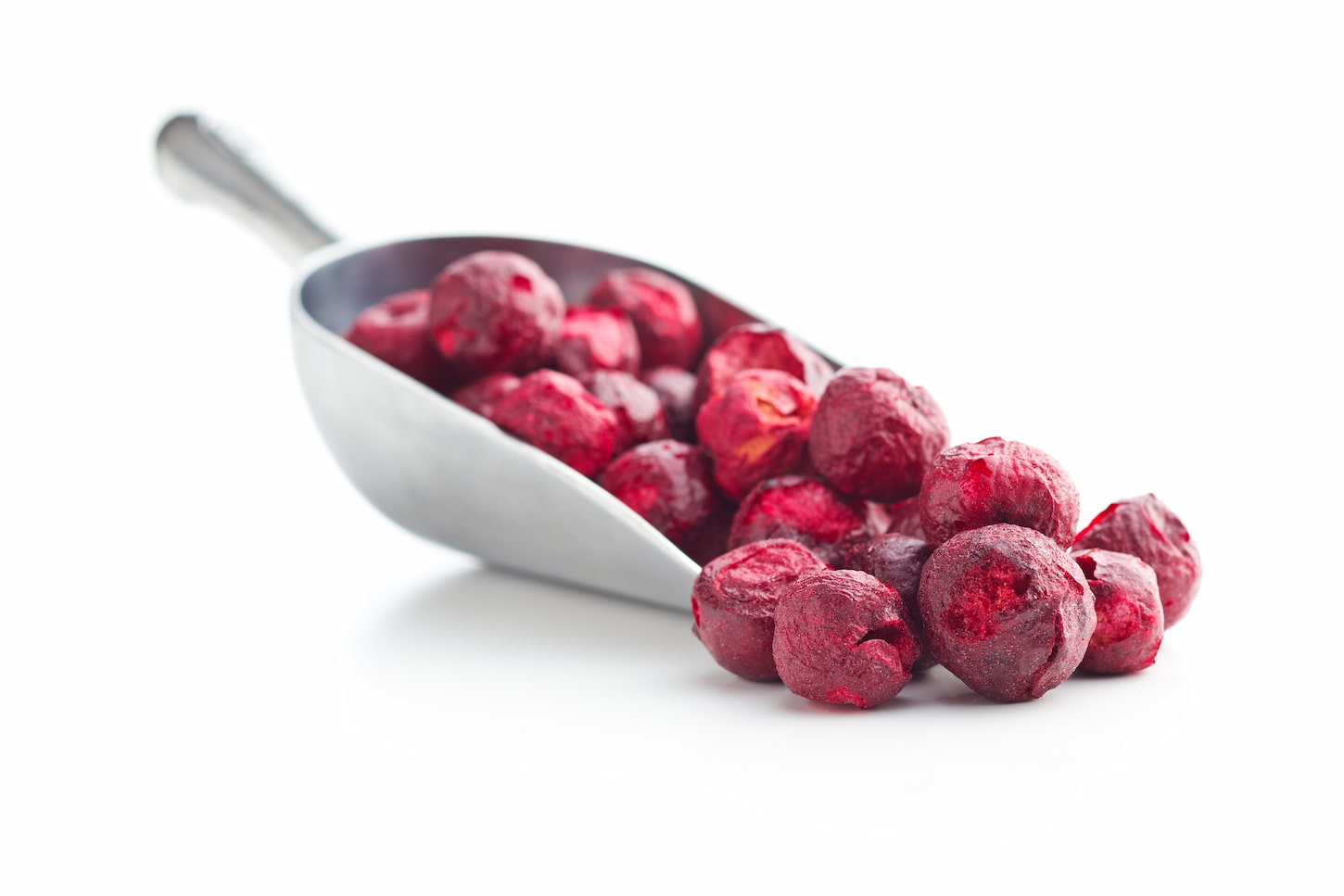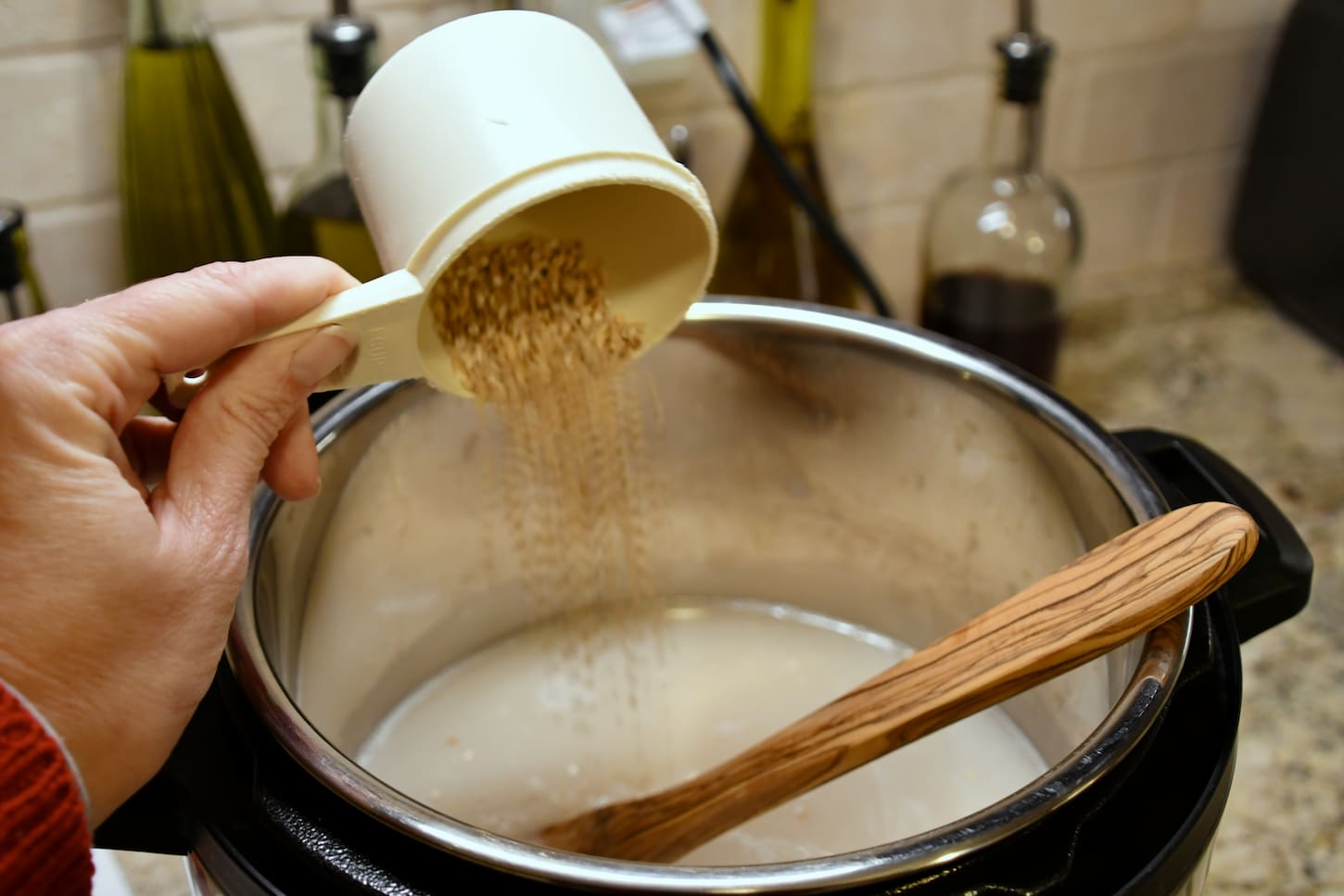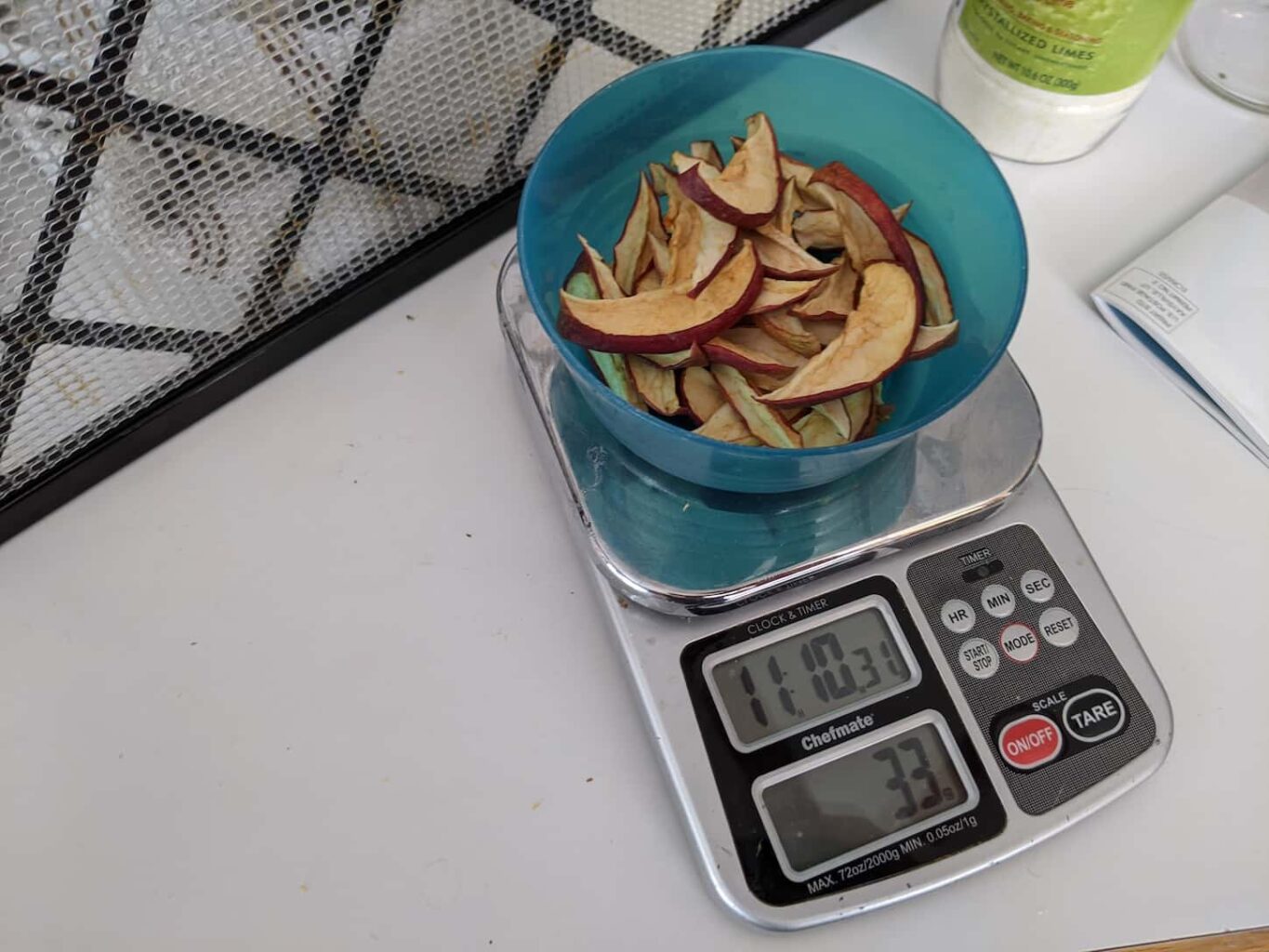Are you culinarily curious and interested in learning something new? Try freeze-drying food at home – it’s one of the better drying methods for preserving food. If you’re a home chef, grow food, or buy fresh produce in bulk, it may be a good investment. When it comes to freeze-drying food, there are a few things that you should know, including whether or not you can freeze-dry in an Instant Pot, air fryer, or without a machine.
For food to be truly freeze-dried, a freeze-drying machine and other essentials are required. Freeze-drying without a proper machine or with instant pots and air fryers will give you a different end result that isn’t completely freeze-dried.
It’s best to use a suitable machine in order to reap the benefits of freeze-drying. Throughout this article, the advantages and disadvantages of freeze-drying will be detailed, but here’s a quick summary.
| Pros of freeze-drying properly | Cons of freeze-drying |
|---|---|
| Cost-saving on fresh produce | Not all foods can be freeze-dried |
| Nutritional value is maintained | Texture can differ |
| Long-term storage | Time-investing |
| Self-reliance | Expensive machinery |
Whether or not you need a freeze-dry machine will solely depend on what you’re looking to gain out of it. Would you want to be self-reliant and freeze-dry your own harvest for long-term storage? Then, the benefits of owning a freeze-drying machine may outweigh the costs. As this method of food preservation can be costly and time-consuming, it’s not for the faint-hearted!
If you’ve read this far, then congrats – you’re ready to take the next steps on your freeze-drying journey. Keep reading to find out more about how to freeze-dry food at home, as well as other key takeaways to get you started on freeze-drying.
Pro tip and spoiler: you need a freeze-dryer to get the best results. Skip the experiments I’ve already done and invest in a Harvest Right Freeze Dryer – it really is the best available option. Click here to shop Harvest Right’s current prices and sales.

What are Freeze-Dried Foods?
Interestingly, water is the biggest difference between freeze-dried foods and fresh foods. The process of freeze-drying requires the removal of 98 percent of its water content. Removing the water prevents the food from spoiling, while its flavor, color, texture (once reconstituted), and nutritional value are maintained.
Freeze-dried food will last longer, making it a good preservation method if you grow your own harvest. To bring it back to its non-frozen state, it just needs to settle in water for several minutes. Once it has defrosted, you’ll be able to cook the food in any way you prefer. Whether it’s air-fried or placed in an Instant Pot, freeze-dried foods will often taste the same as fresh ones.
If you want to know more about the nutrition of freeze-dried foods, make sure you read the article I just wrote on the nutritional content and makeup of freeze-dried food – and how it compares to fresh foods.
Can you Freeze Dry Food at Home?
Most definitely, yes – you can freeze dry food at home. It’s possible to do it given that you have the right tools, time, and budget.
A home freeze-dryer can be quite costly: it ranges from a few hundred dollars (if you build it yourself from parts you already have) to around $2,000-$5,000, depending on which features or extras you want to buy. You can read more about how much freeze dryers cost in this post I wrote here – and how much 28 total factors cost. It’s a good read!
In addition to this, you’ll need to invest some time, as the whole process can take between 20 to 40 hours per load. Some loads defy that average and take up to 3 days. Fresh, juicy peaches picked from my tree take that long when I refuse to cut them smaller than slices – even if I pre-freeze them!
These reasons are generally why freeze-drying is done by major food producers in factories. A smaller-scale producer may also use the freeze-drying technique if they produce their own harvest and have plenty of space to do the process.
The Basics of Freeze-Drying Food
To freeze-dry food, you’ll need these items, plus whatever food you want to store.
- A freezer
- A freeze-dryer
- Mylar bags
- Oxygen absorbers
- An impulse sealer
Naturally, a freeze-drying machine is key in this process. A freeze-drying machine has a special pump and other properties that are different from a regular freezer. In addition to nutritional value, the machine allows the food to keep most of the physical features of the food intact, including color and taste.
Pre-freezing foods make the overall process faster. Then, the freeze-dryer can use its freezing, vacuum pump, and warming cycles to properly freeze-dry the food.
Can you Freeze-Dry with Liquid Nitrogen?
You can freeze food with liquid nitrogen. In fact, it’s the only way to do it “properly,” if you want to avoid any nutritional degradation.
If you want to take your freeze-dried food to the next level, you’ll also want liquid nitrogen. However, it’s hard to get a hold of it, though it can be sourced from a few places, including a welding supply company or a cryogenic laboratory supplier. It might help to do some research into where you can get them in your area, as it may differ. In my
Using liquid nitrogen, food can freeze quickly at a temperature of -196 degrees Celsius. Unlike freezing food in a conventional freezer, freezing food with nitrogen won’t form large ice crystals that can degrade the food. The liquid nitrogen helps keep the food together while maintaining its nutritional value.
Freeze-drying can be a complex process if you’re new to it. Regardless of your expertise, you should always handle liquid nitrogen with gloves and wear protective eye gear. Make sure to buy heavy-duty gloves and the right glasses, as direct contact with liquid nitrogen on the skin can result in severe cold burns. Having plenty of space is also helpful as the process can take up more than just your kitchen benchtop. Depending on the size of your machine, you may need to clear the kitchen or any working space that you may have.
To store the freeze-dried food, you will also require a vacuum to seal it. Here are the steps you need to take in order to freeze-dry your foods.

Preparation of Freeze-Drying Food
Step 1: Do your research
Before you start, double-check whether the food you want to preserve can be freeze-dried. Freeze-drying works best for fruits, vegetables, and certain meat. It doesn’t work well for foods that are high in oils. You wouldn’t want all your long hours of work to go to waste!
Step 2: Prepare the food
Prepare the food that you want to freeze dry by cutting it to the desired size. Give it a good wash and pat it as dry as you can – the less moisture, the better.
For some oil-rich foods, wiping off the oil can increase the likelihood that it’ll freeze-dry and store properly. We’ve freeze-dried cooked ground meats by draining and wiping off as much oil as possible. It’s storable for up to a few years safely like that.
Step 3: Prepare your workstation
Once you’ve done the prep, put it to the side and get out all your safety equipment. Using liquid nitrogen is not to be taken lightly and you’ll need to have insulated gloves and goggles when using it.
Step 4: Freeze the food (with or without liquid nitrogen)
Prepare a clean stainless-steel bowl to place your food items in. When the food is in the bowl and you are safely ready, carefully and slowly pour the liquid nitrogen over the food. Before proceeding to the next step, ensure that the residual nitrogen has evaporated.
Step 5: Use the freeze-dryer to remove the water
This step is fairly easy: all you have to do is to place the frozen food in the chamber of your freeze-drying machine. There are different models of freeze-drying machines, so have a read the manual to see how you should store the food. Make sure to securely close the lid before you leave it to freeze.
Step 6: How the freeze-dryer works
Once the process begins, the machine’s vacuum pump lowers the atmospheric pressure inside the chamber. The temperature inside can go to as low as -50 degrees Celsius. Then, the machine heats the food, purifying the ice crystals to begin the drying process.
The duration of the process depends on the size and amount of the food items. It can last from as little as a few hours to as long as several days! Depending on the device, it’s possible to open the chamber to check its readiness. Other machines have an indicator light to show it’s complete.
Step 7: Store your freeze-dried food
To store your freeze-dried food, place them in plastic or Mylar bags that are designed for vacuum sealing. This is the preferred way of storing your freeze-dried food for the long term as it keeps all the goodness in.
However, you can substitute this with clean glass jars with lids that can be screwed on tightly. Just know that they may not keep as long as they would in a Mylar bag.
Freeze-Drying with Other Devices
Now, I’ve gotten asked a whole lot if you can freeze-dry foods with devices other than a freeze dryer. So let’s cover those questions now.

Can you Freeze Dry in an Instant Pot?
No – you can’t! While they’re known for their multiple conveniences, including a slow-cooker and yogurt maker, an Instant Pot can’t freeze dry foods. These miracle machines are designed to cook various types of food – not freeze-dry them. That being said, the Instant Pot can cook just about anything perfectly and with minimal effort, including freeze-dried food.
I love using our instant pot to cook stews and soups that use our freeze-dried ingredients. But there isn’t a setting on it to actually do the freeze-drying.
Can you put Freeze-Dried Foods in an Instant Pot?
As a method of cooking freeze-dried food, you definitely can put them in an Instant Pot. All it takes is just an extra amount of water and you’re on your way to cooking a meal.
There are many recipes out there for instant pots using freeze-dried vegetables, as the combination of these two makes for a convenient meal. Remember to use freeze-dried fruits and vegetables in moderation, as they contain fewer nutrients than their fresh counterparts. They begin to lose nutritional value from the farm to the supermarket, and from the store to your fridge.
Pro tip: Leafy greens and some vegetables don’t reconstitute as well into their original form. But they are perfect for cooking in an instant pot!
Can you Freeze Dry in a Dehydrator?
Dehydrators cannot freeze-dry food, as they use low heat (and no freezing) to remove water content from foods. Dehydrated foods can remove about half to three-quarters of the water content of food, while freeze-drying can remove 95% of the water content via its process.
While both methods focus on removing moisture from food, dehydrating is different from freeze-drying. A food dehydrator dries out food by using a built-in fan and low heat. Similar to freeze-dried foods, the water is removed so it won’t spoil as quickly.
Dehydrated foods can make for a tasty and healthy snack, such as dried bananas or sweet potatoes. You can even dehydrate beef to make jerky or even herbs to make them last longer. Dehydrators use low heat to cook your food, which means you’ll be able to eat them straight away when they’re hard and crunchy.
Meanwhile, freeze-dried foods often require you to cook them once taken out of the freezer. They’re just used as a way to store your fresh food for a longer time. In short, you can’t freeze-dry food in a dehydrator. Stick to what it does best: dehydrate your food!
If you want to see the difference between dehydrated and freeze-dried, I did a couple of videos on this exact question. You can click here or the image below to go watch it now in a new window on YouTube.
Can you Freeze-Dry food in an Air Fryer?
It’s possible for some air fryers to work as a dehydrator, but they certainly cannot be used to freeze-dry food as they cannot freeze the food nor create a vacuum to remove additional water content.
Thanks to the popularity that air fryers have gained in recent years, they’ve become quite an advanced machine. Some of them have pre-programmed settings that allow you to reduce the heat setting so that you’ll dehydrate the food instead of cooking it.
Can you put Freeze-Dried foods in an Air Fryer?
Yes – you can! As air fryers are a healthier alternative to a deep-fat fryer, they can be used the same way as you would deep frying foods, including freeze-dried ones. Just make sure that they have been reconstituted with water before placing them inside the air fryer. With only needing a tablespoon of oil or so, air fryers can cook up some of your favorite veggies and other foods that have been freeze-dried.
Can you Freeze-Dry without a Freeze-Drying Machine?
Unfortunately, there’s no substitute for a freeze-drying machine. Many sites say you can freeze-dry foods in a freezer by leaving them there, but that’s using a freezer to dehydrate foods, which is not the same as freeze-dried.
In fact, I’ve tried doing it several times (with several types of foods). In every instance, the food’s surface became desiccated, freezer-burned, and took on the taste of other foods from the freezer. And it always took at least a week to reach the point where it looked remotely freeze-dried – and that was limited to the immediate surface area that had direct exposure to the freezing air.
So while many people will say you can freeze-dry with just a freezer, I’m going to respectfully disagree.
Freezer-dried foods don’t taste the same as freeze-dried foods, nor do they cook as well afterward. In fact, they’re generally just gross and only good to be fed to the chickens.
There’s an abundance of machines to do all sorts of cooking methods. However, they’re generally good for only one purpose. If you want to try freeze-drying foods at home, it’s preferable to purchase a freeze-drying machine and its counterparts, including liquid nitrogen and vacuum-sealed bags.

Final Thoughts on Freeze-Drying Devices
While the invention of multipurpose cooking tools, like the Instant Pot, is here to make your life easier, it can’t do everything for you.
Freeze-drying is its own unique process that requires a special machine in order for it to be done properly.
Despite having a similar concept to dehydrating, which extracts moisture from the food, freeze-drying can’t be done in a dehydrator or an air fryer either. T
To summarize, freeze-drying is no easy feat. It takes a bit of time and financial investment, which will pay off if you do it often enough. Being passionate about the process and believing it will improve your lifestyle can also help make it worthwhile.
But if you’ve got the space for all the devices? Your kitchen can be a truly amazing place – and your meals can be fresh, delicious culinary delights all year round. And if you don’t have a freeze-dryer yet? Seriously. Go check out Harvest Right’s machines – and know that their layaway program is an amazing way to get started preparing today without bending your very understandable ideals on not taking out a loan.
Resources
Learning from your own experience is essential, but learning from others is also intelligent. These are the sources used in this article and our research to be more informed as homesteaders.
- “Are Freeze-Dried Foods Just as Nutritious? Let’s See!” Backyard Homestead HQ, 24 June 2021, backyardhomesteadhq.com/are-freeze-dried-foods-just-as-nutritious-lets-see/.
- “How to Use Nitrogen to Freeze Dry Food.” LEAFtv, https://www.leaf.tv/articles/how-to-use-nitrogen-to-freeze-dry-food/
- ”Nutrition of freeze-dried vs. raw fruits and vegetables.” Go Ask Alice – Columbia University, https://goaskalice.columbia.edu/answered-questions/nutrition-freeze-dried-vs-raw-fruits-and-vegetables/